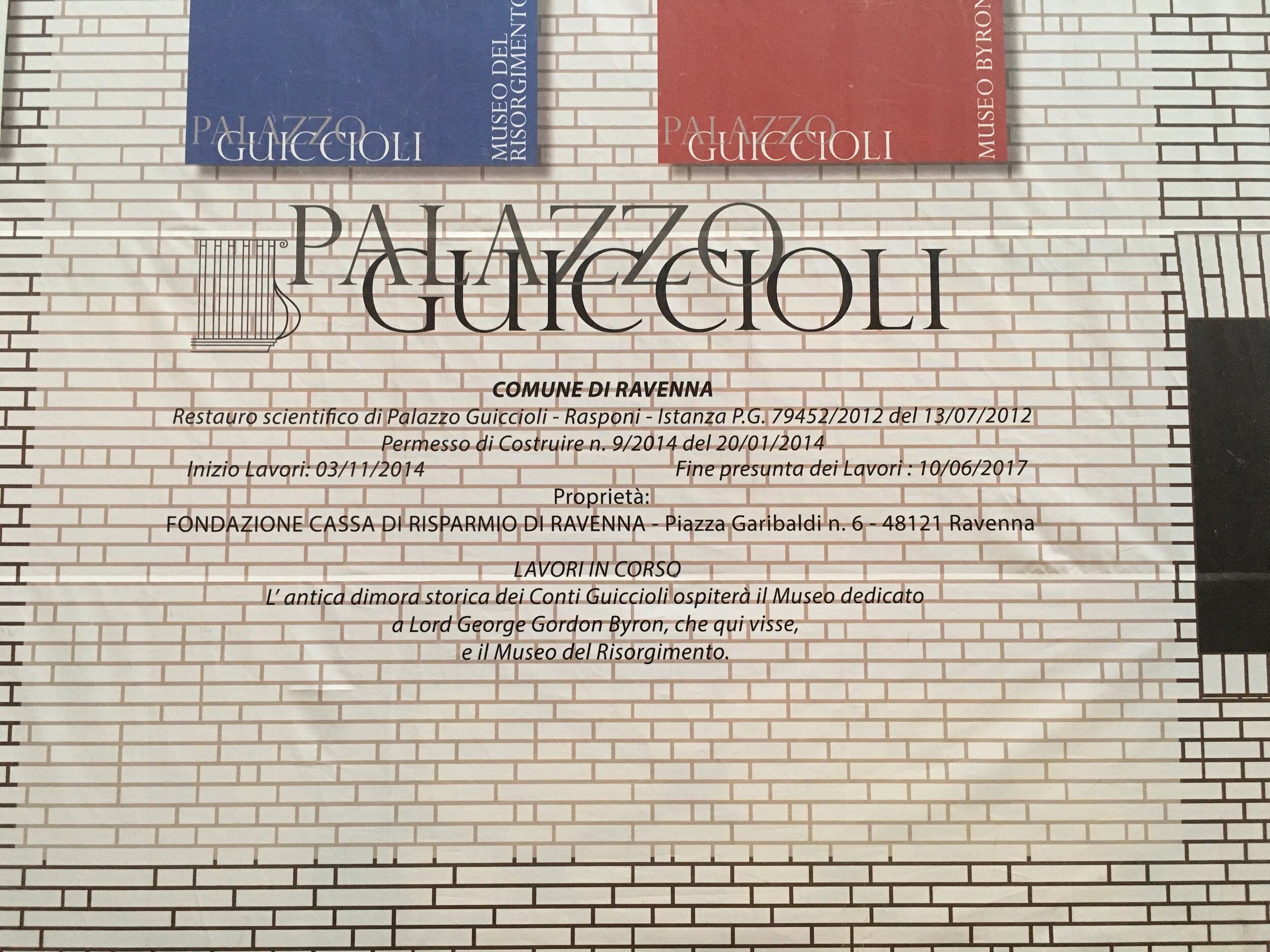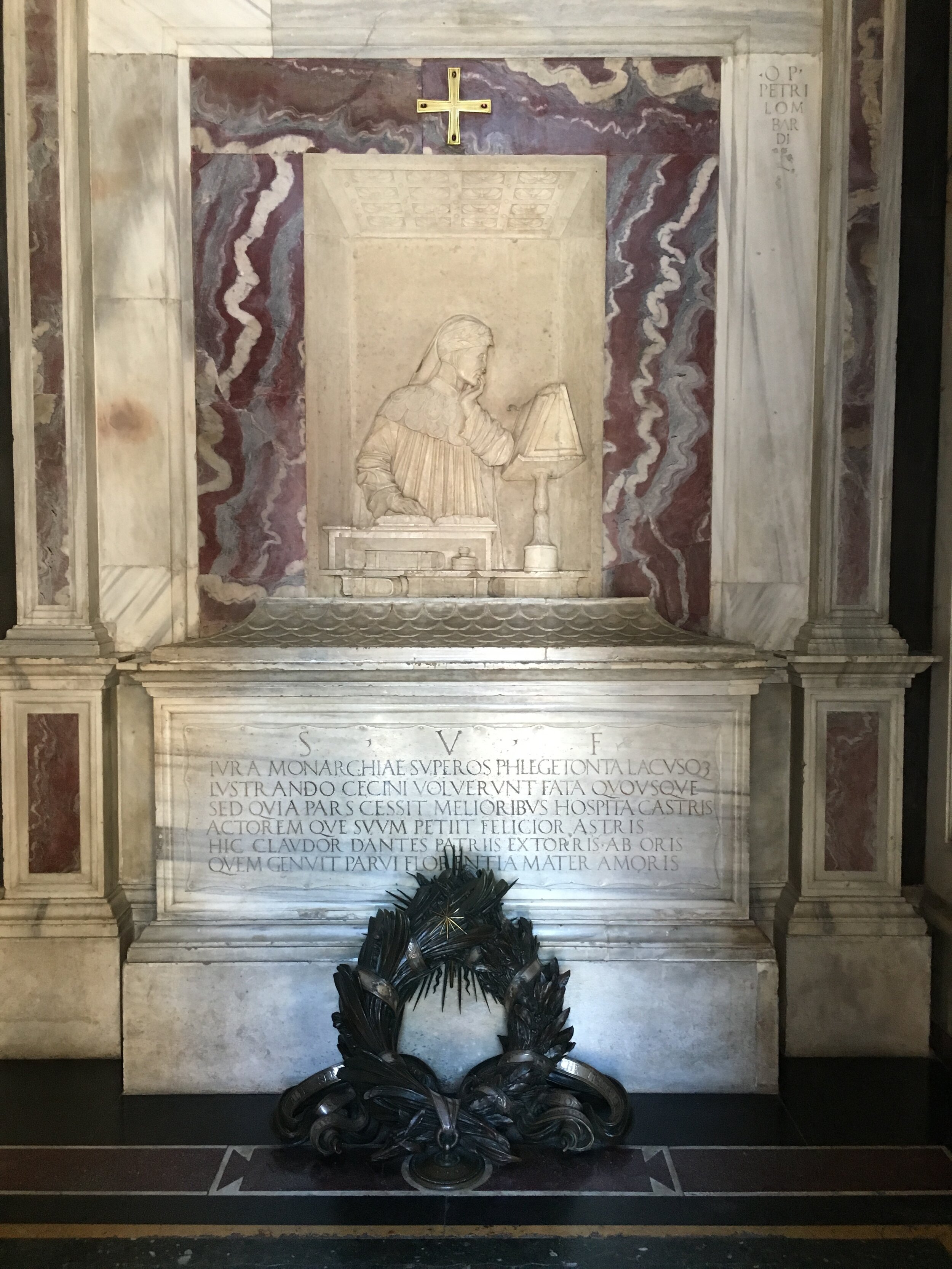Introduction to the city of Ravenna
In a region where it is hard to choose, Ravenna stands out to me, and it is possible to articulate why in one word: mosaics. Ravenna is the city of mosaics, and visiting the charming city is an art history lover’s dream. On top of this, the piazze are characteristic and the aperitivi are memorable. The eminent Dante was buried here, and the restaurants are worth the trip alone.
If you read through some entries on Rome, you will know that I have a thing for Lord Byron, an academic thing, but a pretty serious thing. Byron spent significant time in Ravenna with his love interest Teresa Guiccioli between 1819-1821, yet Byron alone did not determine my choosing of Ravenna for this regional highlight. Here you can read more about Byron’s time in Ravenna. Furthmore, if you have a particular interest in Lord Byron, be sure to check out the Palazzo Guiccioli located on the Via Cavour; it is expected to open as a house museum in the next few years.
I didn’t anticipate the extent to which I would appreciate Ravenna. I had wanted to visit for a very long time. It is not the easiest city to reach by public transport from Rome (for a day trip), as there is no direct route. Therefore, I would recommend combining a visit to Ravenna with Bologna and some or all of the other regional features. The train from Bologna to Ravenna is just over an hour long. At the risk of sounding cheesy and cliché (too late I am sure), visiting Ravenna was like discovering a hidden treasure. I thought to myself, why is this city not more popular than it is?
Just like in most Italian towns, the train station is a reasonable walking distance from almost anywhere you need to be in the city. I visited Ravenna with my parents a few years ago, and we stayed in an adorable bed and breakfast called M Club. The walk from the train station takes about 15 minutes, or you can jump in a cab outside of the station for a quick 5-minute drive. This B&B is near the Porta Adriana, a 16th century archway that leads to the city center. Just beyond this arch, you will find the Trattoria Rustichello, one of my recommended restaurants.
Rick Steves says Ravenna can be seen in a 4 hour stop over; while 4 hours is better than no hours, I say you should spend at least one night in order to maximize your time and explore all the city has to offer, cultural and culinary. The history of mosaics in Ravenna is tied to the narrative and ultimate demise of the western Roman empire, and the Early Christian Monuments of Ravenna have been granted UNESCO world heritage status.
Ravenna was “the seat of the Roman Empire in the 5th century and then of Byzantine Italy until the 8th century.” Hence, when we speak about mosaics in Ravenna, we are talking about the Byzantine mosaics created during this time frame. Eight buildings have the designation and if you would like to visit all of them, you will find them listed in the ‘spots’ section. If interested, you can read more on the UNESCO site linked above, but for a summary, these mosaics are of great importance in art historical terms because they blend both western and eastern “motifs and techniques”. Thus, Ravenna plays an important role in the transition from the Western empire (which collapsed in 476 CE) and the Eastern, or Byzantine, Empire that continued through to the year 1453. Ravenna, however, was taken by the Lombards around 751 CE, but then control of the city changed hands numerous times before the unification of Italy in 1861. Thus, the city has a tumultuous political history, but as it was always in the public eye, churches were embellished with the beautiful mosaics we see today, and monuments were built. The many baptisteries in Ravenna are special, as you walk into a drab and undecorated octagonal building and look up to behold a mosaic decorating the ceiling; the symbolic decorations feature baptismal scenes; the Baptistery of Neon is one of the most striking.
In addition to Byzantine treasures, Dante Alighieri’s tomb is located in Ravenna. He spent the last five years of his life (and exile) in Ravenna; he died in 1321. As you might imagine, the Florentines were not as enthusiastic about the city of Ravenna as I am, especially not for the resting place of their national poet. You can read more about this controversy here.




